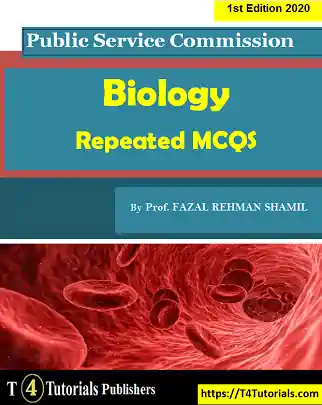1. What is a term which referred to a pair of kidneys, consists of millions of functional units?
A. Dendrons
B. Nephrons
C. Both A and B
D. None of these
2. The difference of living things from non-living organisms?
A. Highly organized, made of one or more cells, contain genetic material
B. Live in the same ecosystem
C. They are acted upon by the same environment
D. Both A & B
3. 500ml water is required to excrete 1g of ammonia …
A. Nitrogen
B. Helium
C. Hydrogen
D. Oxygen
4. The study of fossils is known as …
A. Paleontology
B. Social Biology
C. Environmental Biology
D. Historical Biology
5. What are all invertebrates, amphibians & reptiles?
A. Heterotherms
B. Poikilotherms
C. Homeotherms
D. None of these
6. For knowing the basis of inherited diseases, experiments on DNA molecules in chromosomes are conducted by …
A. Freshwater biologists
B. Social biologists
C. Molecular biologists
D. Microbiologists
7. Hagfishes(among the vertebrates) are isotonic with the surrounding …
A. River water
B. Sea’s water
C. Pond water
D. Lake water
8. Through which technique synthetic insulin from pork was formed?
A. Biotechnology
B. Parasitology
C. Social biological techniques
D. Both A & B
9. The animals that excrete ammonia are known as …
A. Uricotelic
B. Excretotelic
C. Ammonotelic
D. Ureotelic
10. How many are considered as bio elements out of 92 naturally occurring chemical elements?
A. 8
B. 16
C. 22
D. 19
11. The animals that excrete urea are known as:
A. Uricotelic
B. Excretotelic
C. Ammonotelic
D. Ureotelic
12. The stable form in which atoms of different elements combine with each other through ionic or covalent bonding to produce compounds called as …
A. Tissue
B. An organ
C. A molecule
D. Both B & C
